News & Community
9/11: Where Were You?
Baltimoreans reflect on the day that changed America.
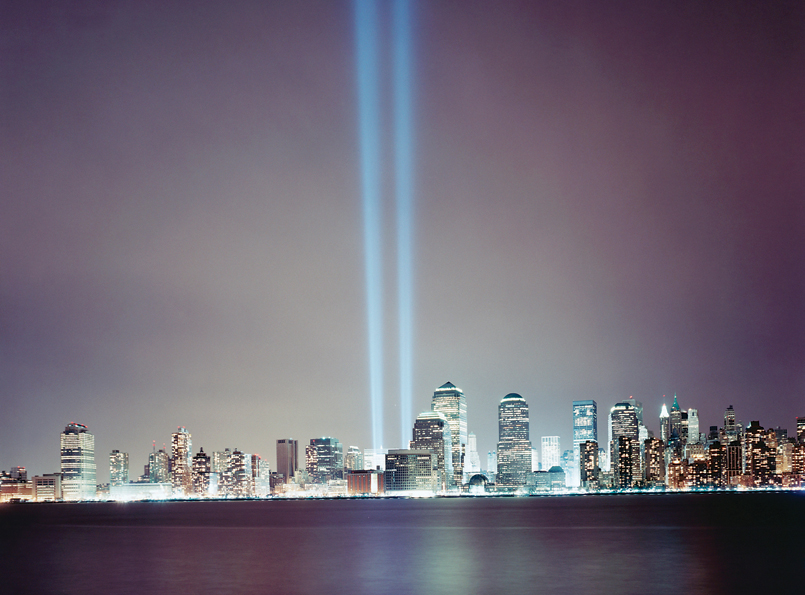
Parris Glendening
Governor of Maryland on September 11, 2001
When you run for office you think about all the things that can happen. Never in my wildest dreams would I have imagined the circumstances that we had on September 11. You could imagine and think through how you would handle other tragedies that are serious—tornado, flood, blizzard, stuff like that—but to have that attack happen during your term was not conceivable.
That morning, I was being driven to the Renaissance Hotel in Baltimore to address a business roundtable on education. As we were coming into the city, someone called and said, “Turn on the news.” I turned on the radio, and they said that a plane had hit the World Trade Center. At that time, it was just the first plane, and I thought to myself, “Oh, that’s tragic,” and was thinking about it as I was walking into the building and as I was being introduced and started to speak.
I was five minutes into my speech when an officer came up and handed me a note that said that I had to leave immediately, and he stood there, emphasizing the importance of it. So I indicated to the audience that something had come up. In the meantime, even as I was saying that and starting to leave, I saw an awful lot of people reaching for their phones, which were not as numerous and omnipresent as BlackBerries and the like are today.
By the time we were headed back to Annapolis, it was clear that it was a terrorist attack. We were just outside of Annapolis—coming off 97 onto 50—when we got word of the hit on the Pentagon and then got word that there was another plane headed this way, the one that would crash in Pennsylvania.
By the time I got up to the office, rumors were rampant that while the targets were in the nation’s capitol, an alternate target was Annapolis. My initial response was that that made no sense, but then they described the target as the Naval Academy. As bizarre as things were, imagine trying to sort out what is rational and what is rumor. Someone had just told you two planes hit the towers, the towers are collapsing, the Pentagon has been hit, and there are other planes in the air—even the Annapolis rumor began to take on some life.
We immediately went into a series of decisions about what needed to be done. We made the formal decision to call up the National Guard command staff. Some buildings were evacuated, including the State House. An emergency command center was opened.
We gave a statement, which was obviously one of concern and support for those affected around the country but also to reassure people that all of the necessary Maryland agencies were conferring with the feds and that, to the best of our understanding, there was no direct threat to Maryland’s peoples or facilities.
I remember thinking late that evening that, as horrible as it was, things actually seemed to work moderately well and most people, at least here in Maryland, seemed to remain reasonably calm. There wasn’t any great sense of panic. There was an “I don’t understand,” and “Why?” but not panic.
In the days after the attacks, the governors made a decision to send a high-visibility delegation to New York City, not just to show our support, but also to send a message that, notwithstanding this horrible tragedy, New York was safe. They were having a complete downturn in their tourism and business as a result of the attacks.
Five or six of us traveled to New York. We met with New York Governor Pataki, had a press conference, went to a fire station that had lost almost everybody and had a brief memorial, went shopping and, that evening, saw
The Lion King on Broadway. I remember, we had so many cameras following us that when we walked in, one little boy asked his mother, “Are they in the play?”
Bin Laden had stated that the goal was not just to inflict physical harm but to destroy the American economy. This was one minor thing that we could do to help offset that.
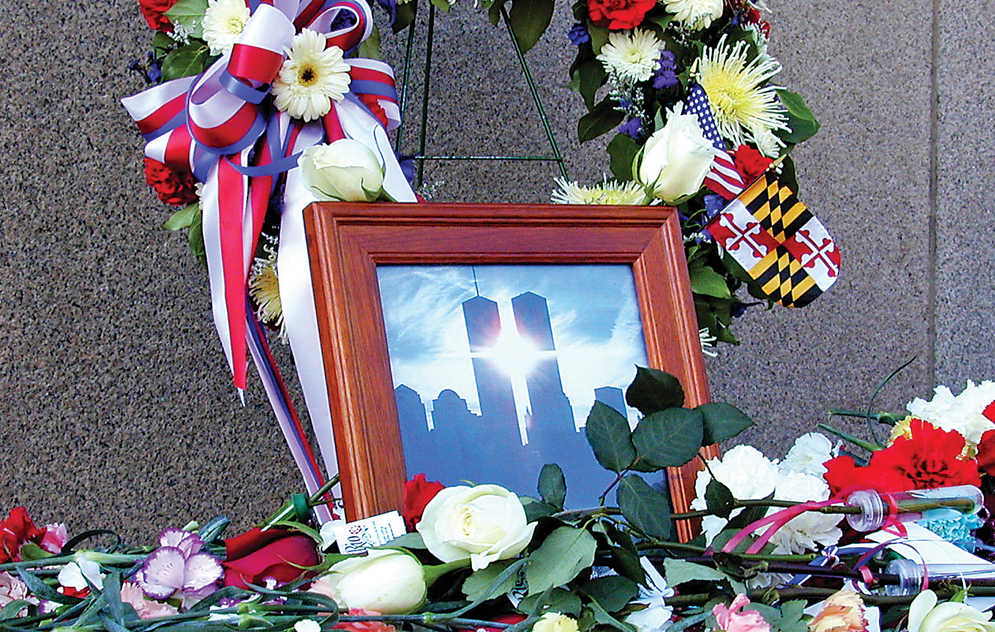
AP World Wide Images
Martin O’Malley
Mayor of Baltimore on September 11, 2001
I was on my way to New Jersey with my mom and my brother, Peter, because it was election day in New York, and my younger brother, Patrick, was running for office. Half my family was already up there working the polls for him, which is what we do in our family when somebody runs for office.
I got a call from a member of my executive protection unit, saying to listen to traffic reports because apparently a plane flew into a big building in Manhattan, and it might snarl up traffic. He didn’t know how big a plane, but he said, “There’s smoke. You can see it on TV.”
We pulled over at Clara Barton rest stop and grabbed a sandwich to go and when we got back in the car, we heard on the radio that a second plane had flown into the second World Trade Center tower.
With that, I looked at my brother, who was driving, and neither of us said a word, but the look in our eyes communicated everything. He immediately turned around in the emergency lane, and we started hauling back to Baltimore as quickly as we could.
It was frustrating trying to get in touch with people via cell phone. I had a short conversation with my chief of staff and the police commissioner before getting cut off, basically communicating that we were on our way back, to have motors meet us at the city-county line.
We’re hearing reports about a plane flying into the Pentagon, a false report of a car bomb going off at the State Department, planes flying over the Capitol and White House, a plane crashing in Pennsylvania. As Mayor of Baltimore, I had one desire, to be back in my city. My only thought was my city, and the possibility that we might well be next.
The police commissioner had gone to a high state of alert before we got back, and I recall some reporters asking us if the SWAT teams in front of City Hall and the police department were really necessary, and who knew at the time? We put a very visible security around our reservoirs, around critical infrastructure, around buildings we thought might be targets, like our own World Trade Center. Everybody’s trying to put together how any of this makes sense, what the future targets might be, and on what rationale.
That evening, after a really horrible afternoon of images and carnage in New York, I remember turning to John Stendrini, the chief of staff to the police commissioner at the time, and saying, “We’re going to become the most well-prepared city in America.” And that’s what we set out to do.
I made a lot of calls the next day and, to no great surprise in retrospect, nobody really had any answers at the White House or any other house. To this date, we’ve pursued 12 core capacities, including interoperable communications and protective equipment for all first responders. On that day, homeland security, defense against asymmetrical attacks became a primary responsibility of every mayor and every governor in America.
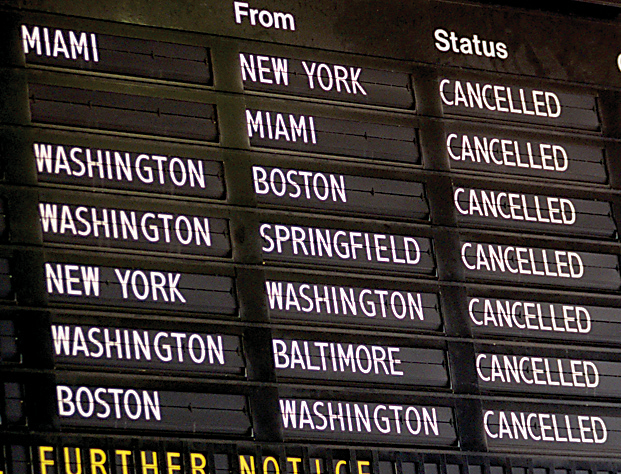
Reprinted with the permission of The Baltimore Sun Media Group. All Rights Reserved.
Ana Raley
Hospital CEO from Kent Island, MD, whose husband Ian J. Gray died aboard Flight 77, which crashed into the Pentagon
That morning, my husband was traveling from Dulles Airport to L.A., a trip he made every three weeks. He was a principal of McBee Associates in Columbia, and they had an office there. In fact, he was going out there that day to close the office, so it would’ve been his last trip out there.
We both got up early. At the time, I was CEO of Greater Southeast Community Hospital in D.C., and I left before he did because I had meetings with bankers from New York at the hospital. His flight was early, 8:30 or so. He got upgraded to first class—which he usually did, that’s why he traveled on Tuesdays. He was sitting in row six, and the hijackers were sitting in row five.
During my meeting, my COO called saying that something is going on, we don’t know what it is, but we’ve been called to make sure our emergency room is ready and that we have enough beds if something catastrophic happens. I got out of the meeting and learned about the first plane that hit the tower. I went to my office but the TV wouldn’t work, so I went to my COO’s office, and I saw the second plane had hit the towers. I called my husband and said, “They’re grounding all the planes in the air, wherever you land, give me a call.”
Then, I learned that American Airlines Flight 77 was missing. I didn’t know his flight number, but Dulles-to-L.A. at 8:36, there’s only one. So, I learned everything through the television. I already knew he was dead. Nobody told me, but I knew.
I stayed in the hospital because Washington was in gridlock, and I didn’t want to deal with that. Many of my friends came to the hospital. I called our chaplain in the hospital and asked him to say a mass for my husband, so we all went to the auditorium and had a mass.
Then I went home. There was nobody on the Beltway, nobody on the streets. When I got home, I remember I had my birthday cards on the kitchen counter, because my birthday’s the 13th. Basically, I was numb. How do you handle news like that? It was so, so painful. I’m a very strong, type-A person, but it just rocked my boat. For the first time in my life, I was the one who needed to be taken care of.
And, from then on, life changed. For a while, my house was full of people every day. We had a memorial about 10 days later. Then I flew to England to see Ian’s mother and brought a suitcase of all the cards and things I had gotten. After that, my son and I went to Venezuela, where my parents live, and had a Catholic memorial there.
Baltimore Medical System, a group of health centers for the uninsured, where he served on the board of directors, named a building after him. There’s also a scholarship in his name at the D.C. Health Care Association and a classroom at Archbishop Carroll High School. And my son, Ian’s stepson, named his daughter, Zoe Gray, after him.
I have lunch with two other September 11 widows. We’ve become really good friends. The problem with the death of our husbands is that it’s a global and a national event, so you’re not allowed to get away from it. Other people move on, but we’re surrounded by it. So you live with it. And I will until the day I die. People will never forget this catastrophic day for our country.
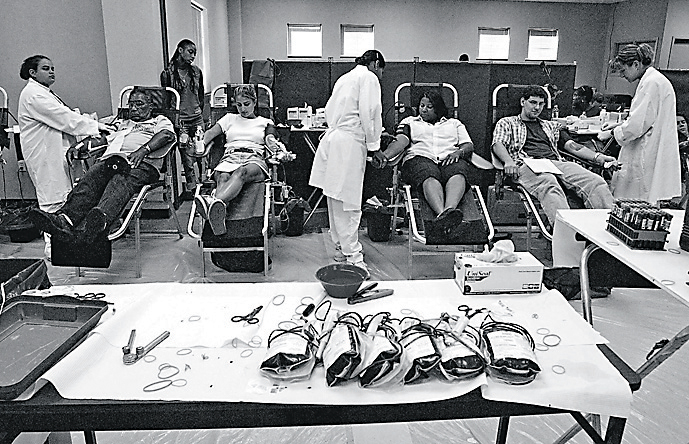
AP World Wide Images
Jeff Lating
Professor of psychology at Loyola University, who went to New York to counsel survivors of the attacks
I was at Loyola, teaching an 8 a.m. class that ends at 9:30. When the class let out, the thing that struck me was that it was very unusual to have a television in the area where we work, and people were watching this all unfold. It was pretty overwhelming.
On campus, I believe that you try to do three things in the aftermath of a traumatic event. You try to foster a sense of social cohesion, you try to get people good information, and you try to develop an action plan. As far as social cohesion, they held a noon mass, which they typically do, but it had an overflow crowd, so people were looking for that sense of being with other people.
We have a lot of undergraduates from New York and New Jersey, so a lot of their parents were directly impacted. The counseling center was working with a lot of students, trying to provide information and support. I’m the director of our doctoral program in psychology and, that day, we brought our students together for a colloquium and thought about what we could do to help. They volunteered to be present that evening in the dorms, in case students wanted to talk.
I have a background in traumatic stress, and I’m a faculty member for the International Critical Incident Stress Foundation. I had just started doing some consulting work with the U.S. Secret Service. The Secret Service headquarters were located at 7 World Trade Center, the building that collapsed on the afternoon of September 11 as a result of the damage to the towers. So, very early Thursday morning, September 13, I left to go to New York to work with agents and support staff that had been in the building when it collapsed.
It was surreal. On the ride up, I could see the smoke and, once we arrived, I was quickly talking to people who had been in the building.
Part of the purpose that I had was to normalize the reactions they were having, which was consistent with people who’d been exposed to an unexpected event of this magnitude. What so impressed me was the sense of social cohesion and resiliency of the people that work there and their ability to provide information to each other and develop a plan to help each other. Overwhelmingly, the agents were anxious to get back to work.
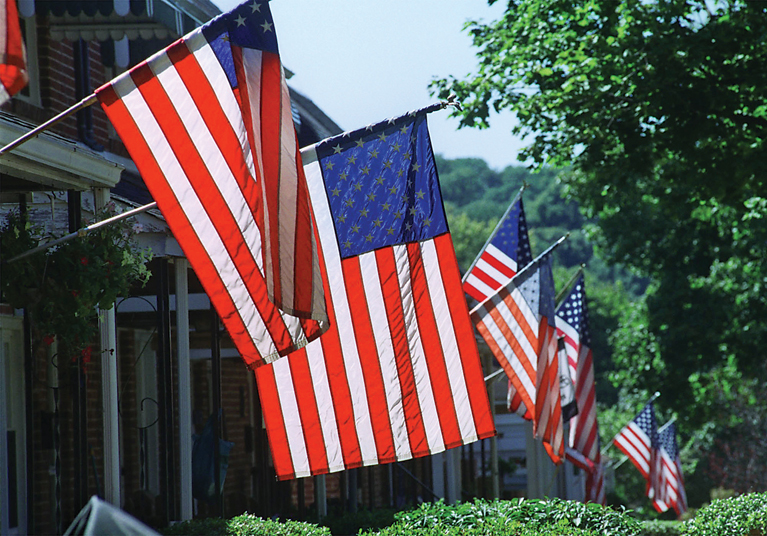
Reprinted with the permission of The Baltimore Sun Media Group. All Rights Reserved.
Douglas Bothner
Architect at Ziger/Snead, co-designer of the Baltimore 9/11 memorial
I took a job at Ziger/Snead in December, 2000, and was at a progress meeting for a church project with Steve Ziger, the firm’s partner. Suddenly somebody opened up the door, interrupted the meeting, and said a plane just hit the World Trade Center. All of us looked at each other, not really understanding what that meant. We thought maybe it was just a small jet—that happened to the Empire State Building once. So, we went back to our meeting.
At 9:03, somebody stuck their head in and said a plane hit the second tower. At that moment, the magnitude of what was happening hit everybody. Steve and I took a very long drive home listening to the radio. At 9:37, they said the Pentagon was hit, and we were shocked, but we were still kind of in a bubble. It was a beautiful day, and so there was this counterpoint between listening to something and trying to process it. I was cataloging all the people I knew in New York and where they worked, and would they be near it.
When we got to the office, every computer was tuned in to CNN, and we spent the day watching video and talking with family. I learned the most shocking thing that night, at around 7 p.m., when I got a call from my father that one of his best friends, Bob LeBlanc, was on Flight 175 that hit the north tower. That’s when the world came crashing down for me personally. I grew up with his kids.
I went up to New York the next weekend. We saw the smoke rising from ground zero, and then spent time with family out on Long Island. For a number of weeks, we were back-and-forth.
In December of last year, the Maryland State Arts Council put out a national request for proposals for the 9/11 Memorial of Maryland, and we jumped on it. Even back in 2001, I felt drawn to the idea of doing something. When this RFP came out, it was an opportunity to fulfill my personal goal—and Steve’s too—of doing something important in response to the 9/11 tragedies.
Probably like no other project, this one coalesced very quickly. In November, Governor O’Malley had appointed a commission to go to New York and pick an artifact from the hangar where all of the World Trade Center steel resides. We decided to leave this torn and twisted piece of steel horizontal, and present it on a base that serves as a resting place. We’re placing it on Pratt Street, in front of the Baltimore World Trade Center, which is a busy place, but we provided a little closure, intimacy, using an aerial hedge.
The artifact is from New York, but the memorial is about 9/11, the day, and so the sun and the time, and all of the events, we decided, should be somehow encapsulated in this memorial. We located the base in such a way that the shadow of the building strikes the base at 8:46 in the morning, the time that the first tower was struck, and marches across and will mark the events until 10:28 a.m., when the north tower falls.
The east side of the memorial will still be in the light at 10:28 and it’s on that side that the names of the victims from Maryland are engraved in stone. The idea of having the names in the light goes back to the idea that even in the darkest hour, there’s always some glimmer of hope that keeps you moving forward and gets you through it. And to us, the memory of those individuals and their lives and how we remember them is what lets us move forward. It’ll be dedicated September 11, 2011.